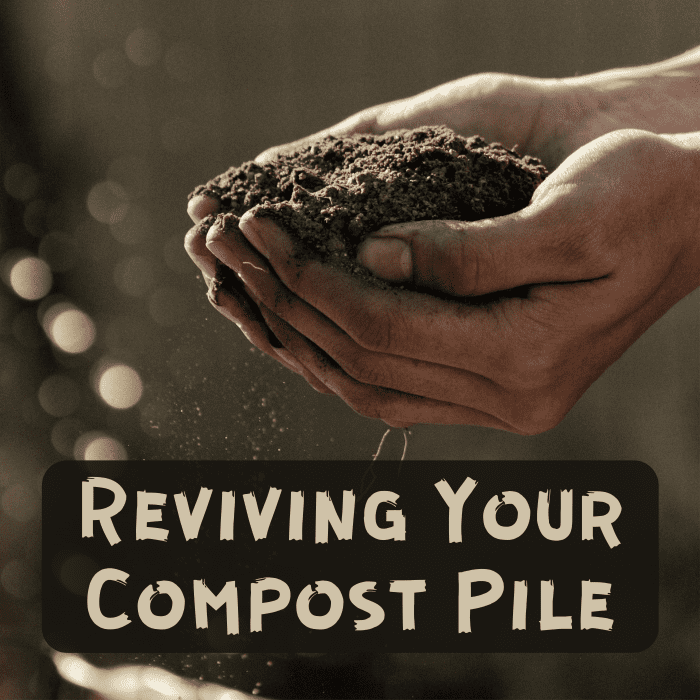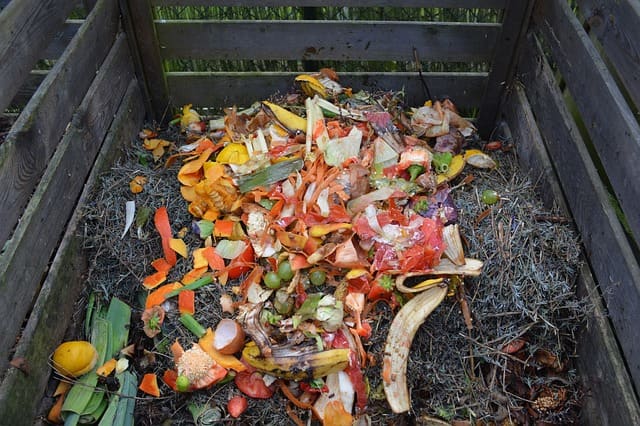How to Make a Compost Pile to Use Chicken Droppings
Brian has a home compost pile and has learned from experience how to restart it after the winter.

Follow this process to speed up decomposition in a dormant compost pile.
Image by StockSnap from Pixabay
Good Gardening Starts With Good Compost
When unusual and unprecedented warm weather encompasses the eastern two-thirds of the country, many minds drift from the grey and sluggish feelings of winter to the bright and active thoughts of spring!
Although this surprise warm weather causes buds to explode everywhere, brightening up the brown landscape of late winter, it may still be too early in many locations to start planting your gardens. But, it is never too early to start planning ahead. One thing that will get you out in the garden and benefit your plants in the spring and summer is composting!
Winter Cold Kills the Microbes in a Compost Pile
This article focuses on how to revive your compost pile. If you're like me, you've probably let your compost pile just sit over the winter. The cold weather ends up killing all those microbes that eat away at the organic materials and turn them into compost. This effectively shuts down your compost pile for the season.
Although the microbes will gradually come back with the warmer weather, there are a few things you can do to speed up the process!

Food scraps in a compost pile.
Ben Kerckx
Quick Tips for Revitalizing Your Compost
- Mix compost 2–3 times a week.
- Make sure the moisture level stays the same; you don't want it too wet, and you definitely don't want it too dry!
- Add some earthworms to help speed up the process of decomposition.
- Add a 60/40 mixture of greens and browns.
- When adding food scraps and other organic materials, break them up into small pieces to increase the surface area exposed to decomposition.
Read about the process in detail below.
Step 1: Evaluate Your Compost Pile or Bin
The first thing you have to do is get outside and take note of how your compost pile or bin fared during the winter. Here are some questions to consider before you begin adding more material to the compost pile.
- Is there any usable compost already at the bottom?
- Did any large debris, like branches, damage or fall into the pile?
- Is the compost bin still sturdy?
- Does it need a tune up? Or does it need to be replaced?
Step 2: Mix It Up
Normally, you should mix your compost pile at least once a week in order to mix oxygen and moisture into all the layers. However, to speed up the decomposition, especially when you are trying to revive your compost pile, I suggest mixing at least 2–3 times a week. The mixing doesn't have to be intense—just enough to mix the latest materials into the rest of the pile.
Step 3: Add Worms
It may seem strange (and it may freak out some people), but adding worms to your compost helps dramatically! Now, I'm all for the fair treatment of animals, even little worms, so only place worms in your bin if it is a bottomless bin; although you are treating the worms to a feast, you don't want to trap them!
I usually go into the backyard after a spring shower and search under some rocks and in the garden for any worms. Once I find a few, I gently pick them up and put them in my compost pile. The worms speed up the composition process by eating a lot of the organic material. I saw a huge increase in composition after adding worms to my pile last year.
Important Note: Don't mix your compost on the same day you add the worms; you don't want to kill any!
Step 4: Follow the 60/40 Rule
When adding more material to your compost follow the following rule of 60% green and 40% brown. This refers to green materials like grass, vegetable scraps and such that are high in moisture and nitrogen; brown refers to dried leaves, dried up plants, anything already in the composition process. If you follow the 60/40 rule your compost will not only keep balanced moisture levels but you will have more nutrient soil in the end!
Step 5: Keep the Pile Moist
It may not seem like it but when warm weather comes early sometimes the humidity is lagging behind. The sudden rise in temperature causes the relative humidity to plummet, making the landscape very dry. So it is very important at the beginning of spring to make sure your compost pile is moist. However, you also don't want to flood your compost pile either!
Step 6: Use Small Scraps, Not Big Ones
When you're adding table scraps and other vegetation or materials to the compost pile, break them up into the smallest pieces possible to aid in decomposition. By breaking the material into smaller pieces, you are actually increasing the surface area and allowing more microbes to reach it. This increased area for the microbes means the material will decompose quicker, which results in you getting topsoil earlier.
Read More From Dengarden
This article is accurate and true to the best of the author's knowledge. Content is for informational or entertainment purposes only and does not substitute for personal counsel or professional advice in business, financial, legal, or technical matters.
bob migliore on June 08, 2018:
Very well done video, especially for beginners and backyard composters.
Jay Dickens on June 29, 2013:
I've not done well with composting, still looks like a pile of dried and/or rotten veggie scraps. But looking at your checklist, I think I've missed Steps 2-6 along the way, especially the 60/40 mix and cutting things up into smaller pieces. Will change up things up & see if it improves - my kids will get a kick out of adding worms! #happy2years
Brian Dooling (author) from Connecticut on March 19, 2013:
Thanks homerevisor! i have a couple hubs on gardening and vegetables gardens
Home Revisor from New Jersey on March 18, 2013:
The 60/40 rule is KEY!! Great Hub, I'll have to make sure to follow you to see the ones you produce in the future. Very interesting!
MamaTschet from Northern Colorado on September 04, 2012:
Very interesting. I will look at our Garden Center and see what I can find!
Caren White on September 04, 2012:
No, in fact they may like it! Some peopl use it to train their pets where to relieve themselves in the yard. They use canine predator like wolf or fox for their dogs and feline predator like bobcat for their cats.
MamaTschet from Northern Colorado on September 04, 2012:
Thanks Old Roses! Will the predator urine bother my dogs? Obviously the mice aren't afraid of them. I don't think my husband will let me plant mint, the last time I did it took over our whole back garden!
Caren White on September 04, 2012:
You can try spraying predator urine on your side of the fence to discourage the mice. Yes, you buy it and no, it's not as icky as it sounds. You can also plant things along your fence that mice stay away from such as mints and penneyroyal. Be careful! Mints (and penneyroyal which is a member of the mint family) spread aggressively. Also, penneyroyal is poisonous if eaten. You can safely rub it on your skin as an insect repellent.
MamaTschet from Northern Colorado on September 04, 2012:
We have an issue with mice and our neighbors compost bin. Any suggestions for that? They travel along the common fence and end up in my grill. They are nesting close to the bin, obviously a food source for them.
Brian Dooling (author) from Connecticut on September 04, 2012:
Hey Letitialicious thanks for the comment! Yeah I'm not sure I would want to put a worm composer under my sink either! Maybe your building can do one big one, or a neighborhood one
Letitialicious from Paris via San Diego on September 04, 2012:
I'm so envious. I love the idea of composting, but living in the city it's difficult to do. I attended a talk on worm composting under the kitchen sink, but wasn't totally convinced by this apartment-sized composting solution...
Brian Dooling (author) from Connecticut on September 03, 2012:
Thanks for the comment OldRoses!
Caren White on September 03, 2012:
I agree with most of the points you make except about winter weather. A properly constructed compost pile stays warm in the center all winter so the microbes continue working. Only the edges freeze. Only turn your compost during warm weather for best results.
Brian Dooling (author) from Connecticut on September 03, 2012:
Thanks Patsybell! And that's a great idea!
Patsy Bell Hobson from zone 6a, Southeast Missouri, USA on September 03, 2012:
voted up and useful. Now help us with fall composting.
Brian Dooling (author) from Connecticut on September 03, 2012:
thanks bridalletter! im glad your enjoying my hubs!
Brenda Kyle from Blue Springs, Missouri, USA on September 03, 2012:
Good tips, exactly what i need to do. I never add worms, there always seems to be plenty when i add those scraps. It is time to revive my compost
How to Make a Compost Pile to Use Chicken Droppings
Source: https://dengarden.com/gardening/revivecompst
0 Response to "How to Make a Compost Pile to Use Chicken Droppings"
Publicar un comentario